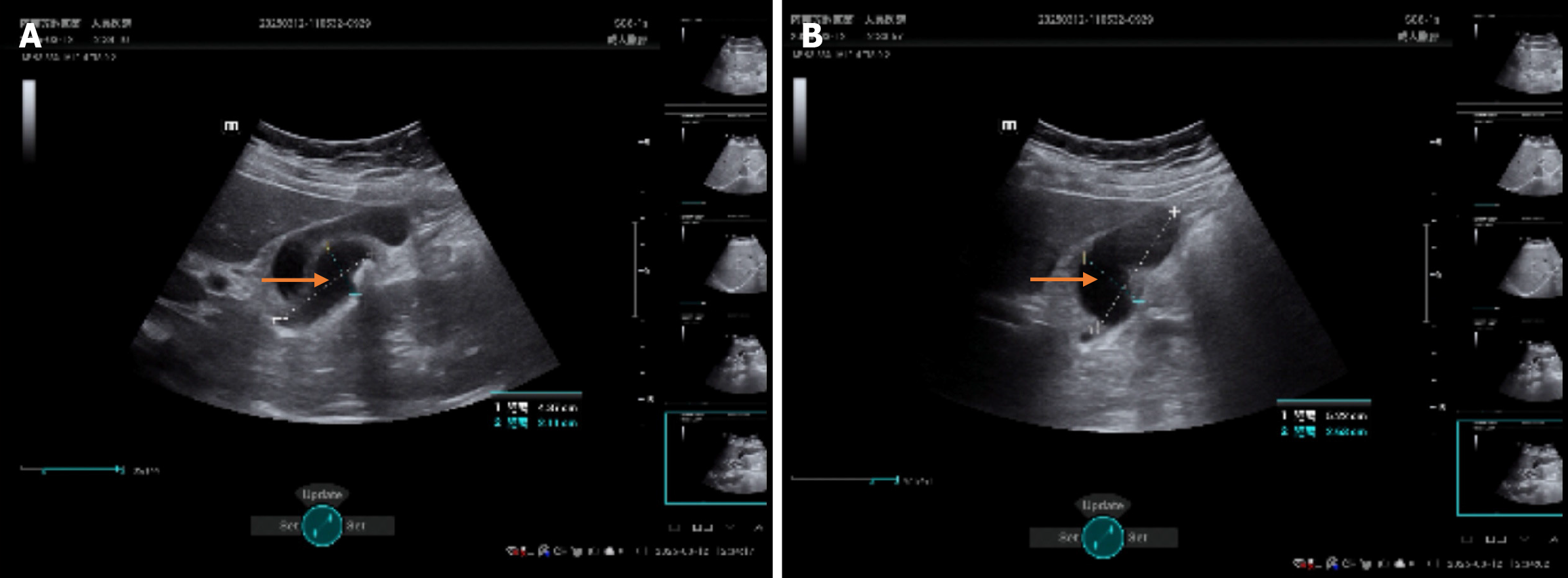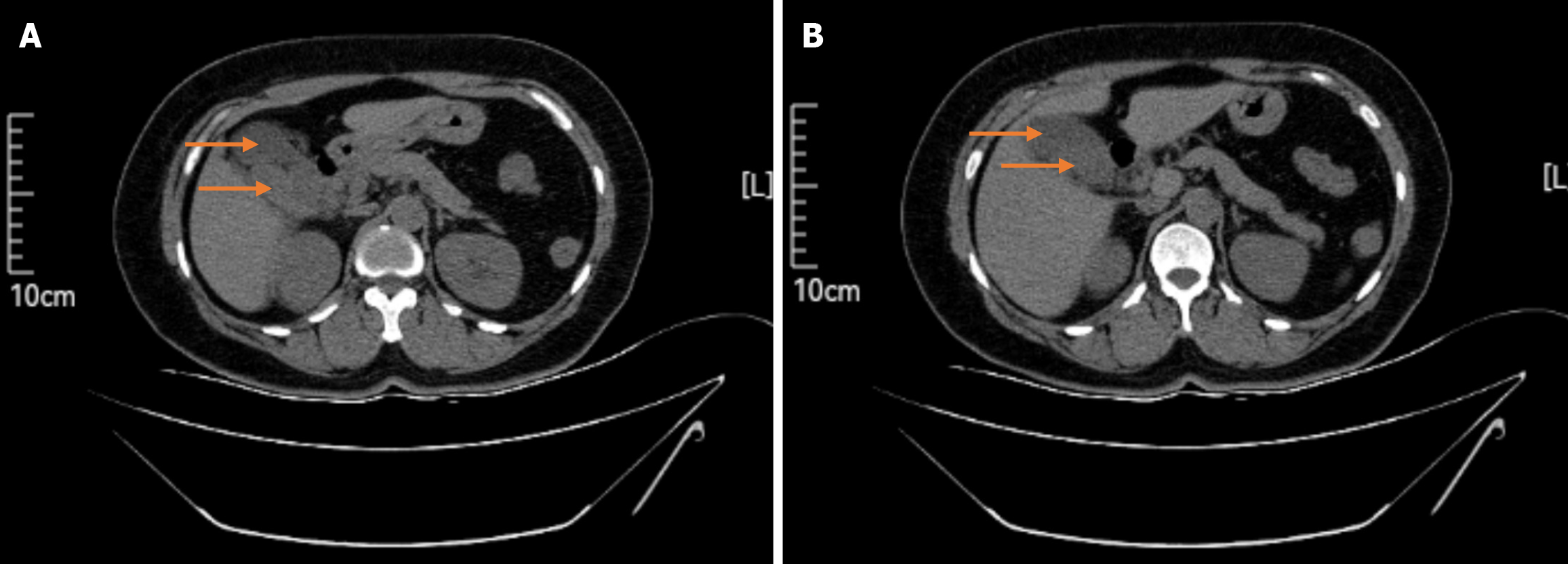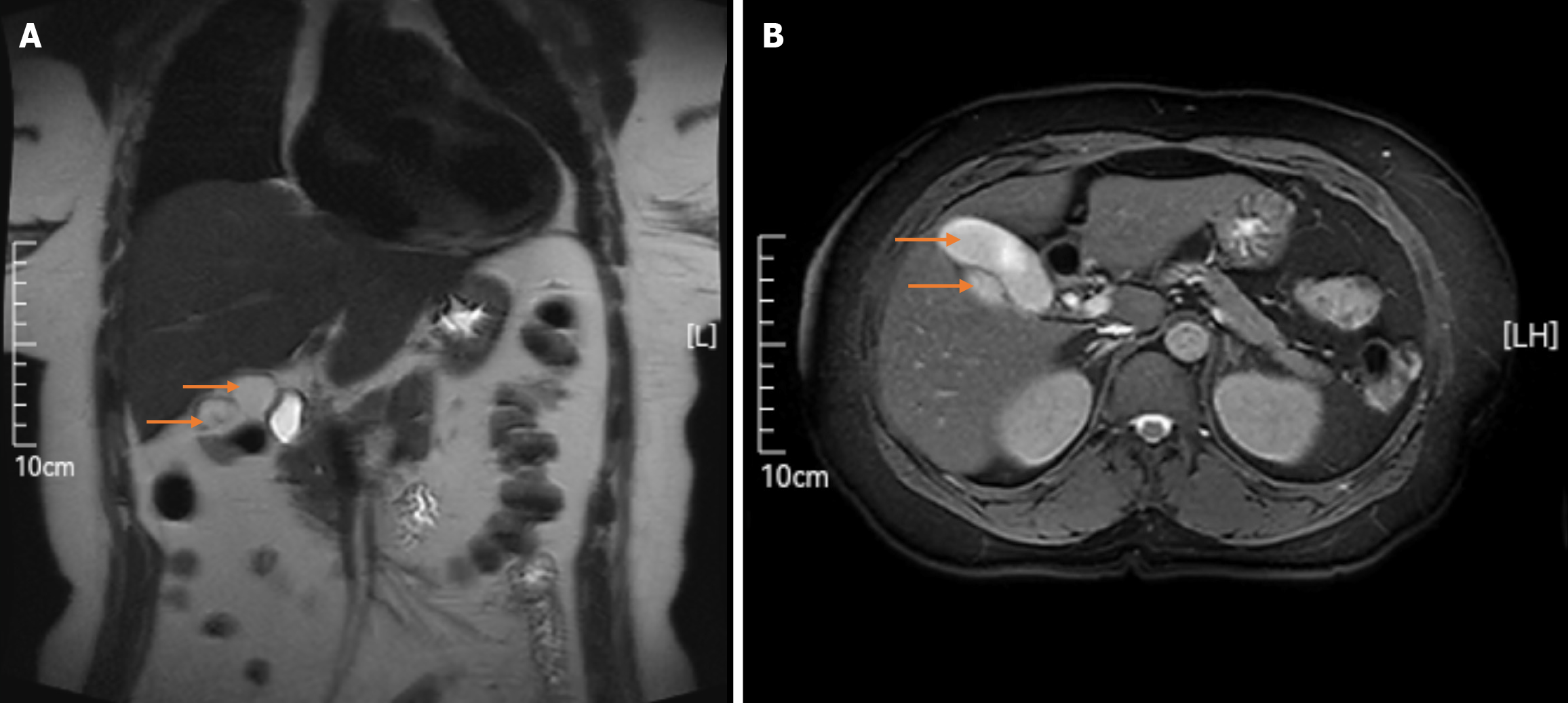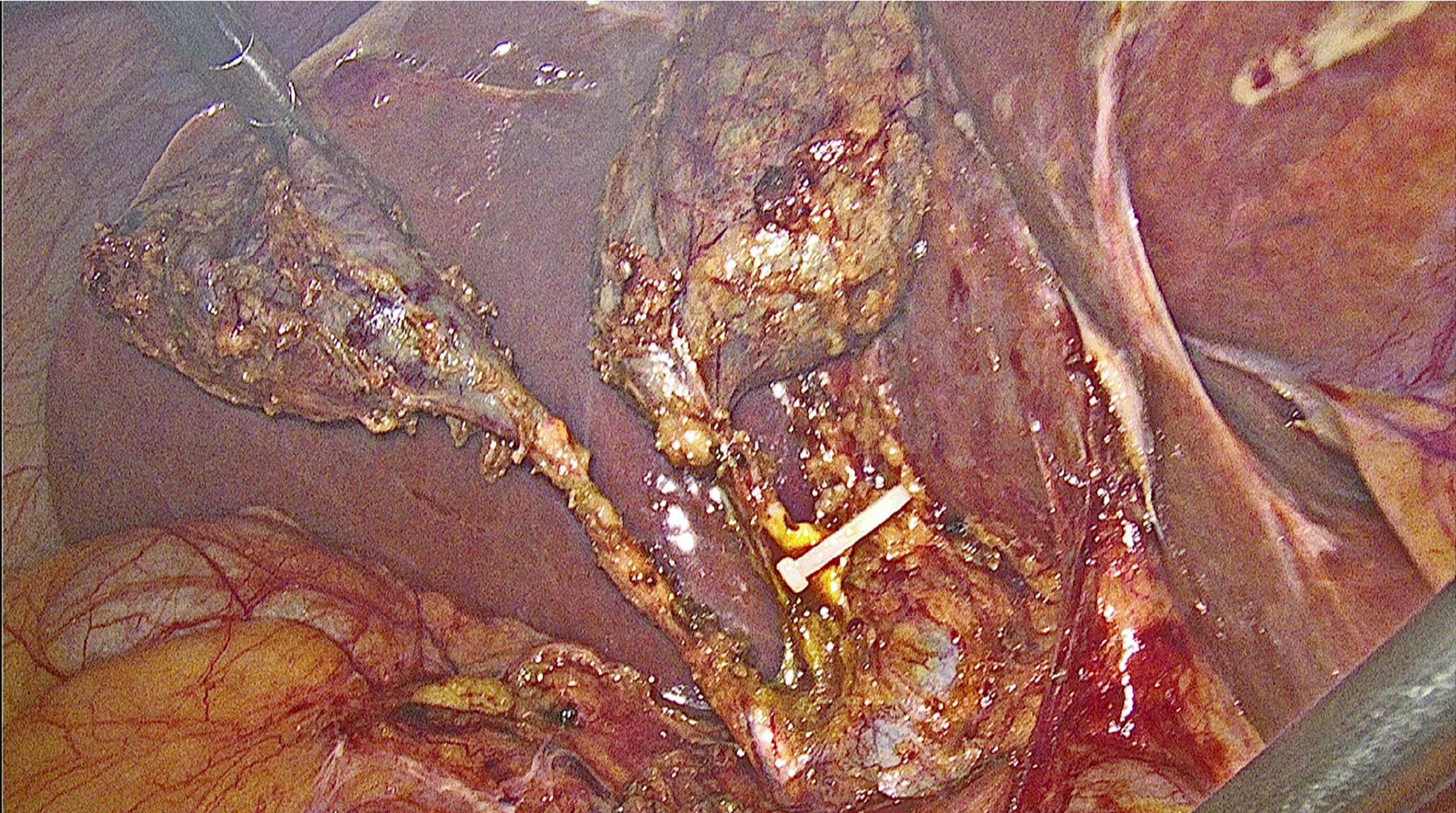Copyright
©The Author(s) 2025.
World J Gastrointest Surg. Sep 27, 2025; 17(9): 110796
Published online Sep 27, 2025. doi: 10.4240/wjgs.v17.i9.110796
Published online Sep 27, 2025. doi: 10.4240/wjgs.v17.i9.110796
Figure 1 Abdominal ultrasound showing abnormal echoes in the region of the gallbladder, indicating a double gallbladder malformation.
A and B: The B-ultrasound images at different angles and sections. The sizes of the two gallbladders are 52 mm × 26 mm and 43 mm × 21 mm respectively. The orange arrows indicate the gallbladder cavity. Multiple strong echoes with posterior acoustic shadowing are observed in one gallbladder cavity, providing evidence to indicate the presence of multiple stones.
Figure 2 Computed tomography scan showing a duplicated gallbladder.
No gallstones are discernable on the tomographic images. A and B: The different layers of the computed tomography scan. The orange arrows indicate the gallbladder cavity.
Figure 3 Magnetic resonance cholangiopancreatography showing a double gallbladder anomaly, with a nodular low signal in one of the cavities, which is assumed to indicate the presence of stones.
Neither the common bile duct nor the hepatic ducts are dilated. A: T2-weighted imaging coronal view; B: T2 fat-suppressed axial view. The orange arrows indicate the gallbladder cavity.
Figure 4
Intraoperative findings showing a double gallbladder malformation, with each cystic duct independently draining into the common bile duct.
- Citation: Ahunayizhi A, Zhang XL, Chen Q, Wang H, Ding G, Akumuo S, Wang XX, Ruan XJ. Laparoscopic management of gallstones in a duplicate gallbladder with double cystic ducts: A case report. World J Gastrointest Surg 2025; 17(9): 110796
- URL: https://www.wjgnet.com/1948-9366/full/v17/i9/110796.htm
- DOI: https://dx.doi.org/10.4240/wjgs.v17.i9.110796
















